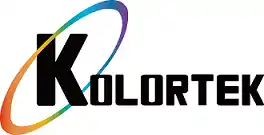How photochromic pigment works and its use in various industries
March 29th, 2023Photochromic pigments are a fascinating class of materials that change color when exposed to light, often in response to UV radiation. These pigments are widely used in various industries for their unique optical properties and ability to change the color of an object, making them a popular choice for products like eyeglasses, toys, and security inks.
The way photochromic pigments work is quite simple. When these pigments are exposed to UV light, they undergo a chemical reaction that causes them to darken. Conversely, when the UV light source is removed, the pigment returns to its original color. This process is reversible and can be repeated many times without losing its effectiveness.
One of the main uses of photochromic pigments is in the production of photochromic lenses. These lenses change color in response to UV radiation, darkening when exposed to direct sunlight and becoming transparent again when indoors or in low light conditions. They are commonly used in prescription glasses, sunglasses, and safety glasses. Photochromic lenses are also used in outdoor sports such as skiing and cycling, where light conditions can change rapidly.
In addition to eyewear, photochromic pigments are used in other industries such as textiles, paints, and inks. In textiles, photochromic pigments are used to create color-changing fabrics, which have applications in fashion and interior design. The pigment can be added to paint to create color-changing wall coverings or murals, while security inks containing photochromic pigments can be used for anti-counterfeiting purposes, such as on banknotes or passports.
Photochromic pigments are also used in the creation of educational toys and puzzles. For example, picture books with photosensitive pages that change color when exposed to sunlight are popular with young children. Similarly, photochromic pigments are incorporated into toys like color-changing putty, which changes color based on exposure to UV light.
Overall, photochromic pigments are a versatile and exciting class of materials with many useful applications in various industries. They have unique optical properties that allow them to change color in response to UV radiation, making them ideal for use in products like eyewear, textiles, paints, and inks. As technology advances, we can expect to see even more innovative uses for these remarkable pigments.
